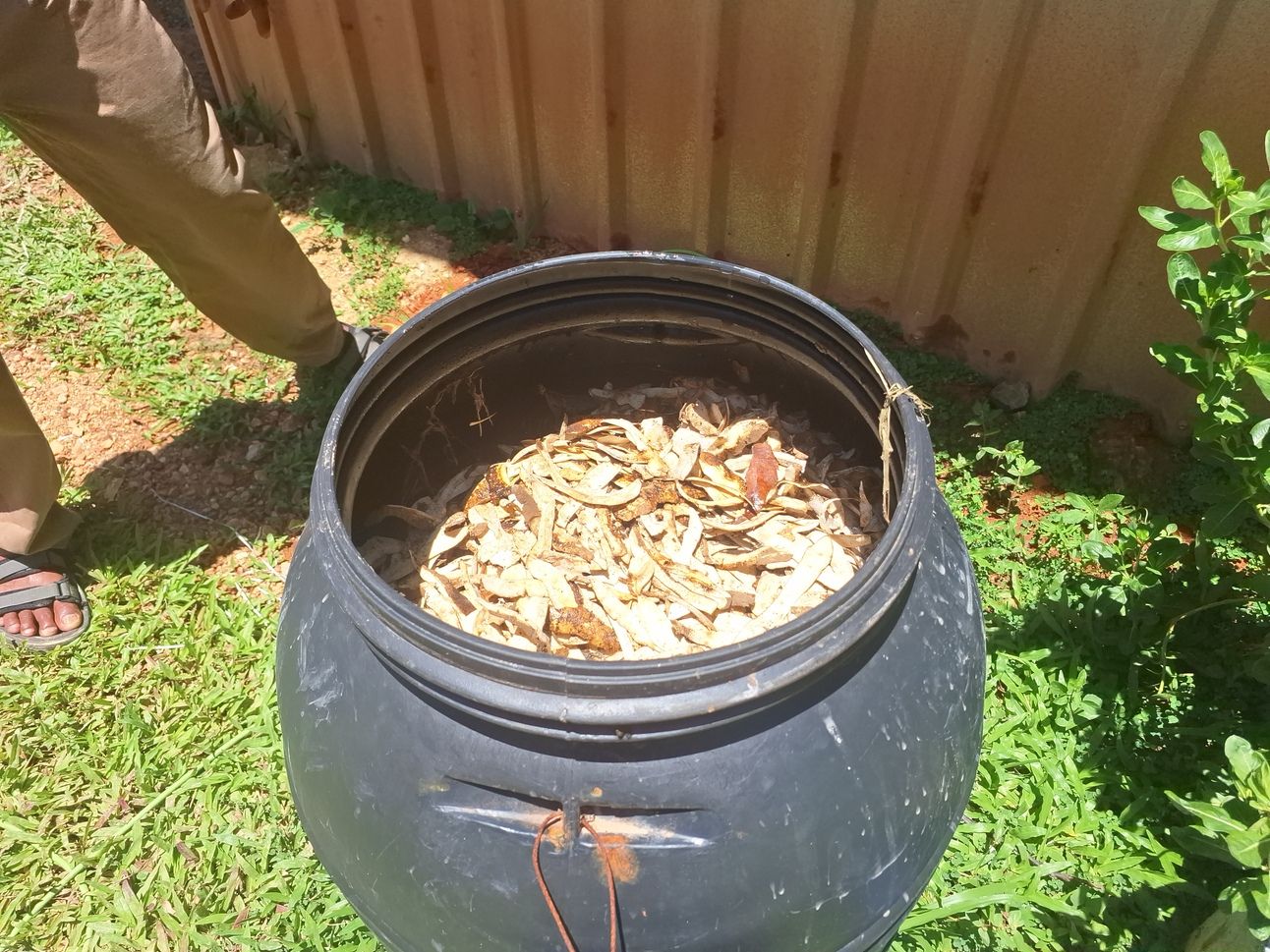- Nalau's Newsletter
- Posts
- Cultivation of Wild Yam using Home-Made Organic Fertilizer
Cultivation of Wild Yam using Home-Made Organic Fertilizer
Yam is the staple food for many coastal communities in Papua New Guinea. Some of these communities celebrate yam harvests as an annual event. The most popular of these is the Yam Festival of the Trobriand Islands in the Milne Bay Province, which goes along with the exotic and electrifying Tapioca Dance. In the Managalas Plateau of the Oro Province, yam festival is also practiced, where one village invites other villages to join in its annual yam harvest through feasting and sharing of yam tubers.
There are rituals that go along with the planting of yams, and each community has its own unique ritual. There are also folklores that pertain to the types of yams planted and the different rituals performed during planting.
Wild Yam, aka Mami, is a species of yam that is mostly found in the wild. But Trobriand Islanders are known for cultivation of Mami, and wherever they reside, you can find them cultivating these yam species.

Harvested Wild Yams (Mami)
In my own village, Mami exists in the wild. However, harvesting and eating of Mami is not a common activity. Due to the abundance of crops like taro, plantain (cooking banana) and sweet potatoes, my people only turn to Mami when there is a prolonged drought that affects the cultivation and harvest of common food crops.
Mami is a yam species adapted to infertile soils, and it can also tolerate prolonged droughts. Therefore, these attributes of Mami makes it a food crop that can be promoted for addressing climate change adaptation and food security issues.
Mami, when cultivated, is planted in mounds just like sweet potatoes. One seed of Mami is planted per mound, and the vines are allowed to grow on wooden stakes placed beside the mounts. And after about 6 months, the Mami crops are harvested.
In the Central Province, especially Rigo District, Mami is cultivated by the local people along with other yam species. The soils in Rigo District, including that of Port Moresby, are clayey in nature and highly infertile, but Mami thrives in these places due to its ability to tolerate infertile soils and prolonged droughts.
As part of a small livelihood program that I run with my church members in Port Moresby, we also promote the cultivation of root crops like taro, sweet potatoes, English potatoes and yams. Therefore, Mami is also cultivated as a yam species that is tolerant to the infertile soils and dry climatic conditions of Port Moresby.
One of our church members in the livelihood training program was given a few Mami seeds by some Trobriand Islanders living at Gerehu. He then experimented by planting the Mami seeds directly in the infertile soils of Port Moresby under the dry climatic conditions to see how they would turn out. He did not plant the Mami seeds in mounds.

Home-Made Organic Fertilizer
In order to enhance the growth of his Mami crops, he watered and fertilized them regularly. The fertilizer used was a home-made organic fertilizer produced from kitchen waste, dry leaves, kangkong (water spinach) leaves, malmal tree leaves, moringa tree leaves and other vegetable matter sourced from the surrounding environment.
After 6 months, the Mami crops were harvested. And to his surprise, the Mami seeds he planted had produced a crop yield that was much better than he expected. The Mami tubers were larger than expected despite being directly planted in infertile soils without mounding or ploughing under the dry climatic conditions of Port Moresby.
The high yield of the Mami crop was due largely to application of the home-made organic fertilizer. The application of this organic fertilizer to crops like sweet potatoes, dragon fruits, guava trees and apple and mango tree seedlings has also produced phenomenal results for our little livelihood program.

Harvested Yams
This type of organic fertilizer has been used by Asians, especially Koreans, for ages as an alternative to inorganic fertilizers. The zero cost and organic nature of this fertilizer has economic and health benefits, which have been the driving forces behind the use of this fertilizer in our little livelihoods program.
With the good results obtained from our little experiment with Mami cultivation using our home-made organic fertilizer, we are now ready to experiment with planting Mami in bags and fertilizing them with our home-made organic fertilizer. If possible, we will plant Mami using mounds and fertilize them using our home-made organic fertilizer.
The good result of this experiment with Mami cultivation and harvest using our home-made fertilizer shows that the same can be achieved with other root crop species.

More Harvested Yams